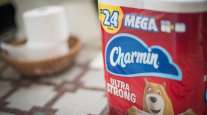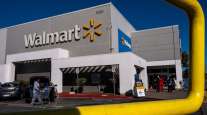Retail Sales Show Broad-Based Gain as Consumers Spur Growth

Sales at U.S. retailers rose in July on growing demand for everything from cars to clothing, and a decline the previous month was wiped away, signaling consumers are propelling growth in the world’s largest economy.
The 0.6% advance matched the median forecast of economists surveyed by Bloomberg News and followed little change in June that previously was reported as a 0.3% drop, a Commerce Department report showed Aug. 13. Eleven of 13 major categories showed gains.
Rising employment, stronger finances and still-cheap fuel are helping draw consumers into stores and auto dealerships. Growth in household spending, which accounts for about 70% of the economy, is bolstering the expansion as Federal Reserve policymakers move toward lifting interest rates this year for the first time since 2006.
“The consumer is in good shape,” Brian Jones, a senior U.S. economist at Societe Generale in New York, said before the report. “We have a vibrant labor market, and the unemployment rate continues to move lower. The outlook for third-quarter spending is pretty decent.”
Estimates in the Bloomberg survey of 84 economists for total retail sales ranged from gains of 0.1% to 1%.
A report from the Labor Department showed applications for unemployment benefits last week hovered close to a four-decade low, a sign firings remain muted as the job market firms. While jobless claims climbed by 5,000 to 274,000 in the period ended Aug. 8, they remain close to the 255,000 reached a month ago that was the lowest since 1973.
The cost of imported goods fell 0.9% in July from the prior month, the biggest drop since January, another Labor Department report showed. The decrease was led by a slump in fuel prices.
The Commerce Department’s report showed retail sales excluding autos increased 0.4% in July for a second month. The revised reading for June also reversed a previously estimated 0.1% drop, painting a healthier picture for consumer spending.
The updated June figures, combined with upward revisions to May, probably will prompt economists to boost tracking estimates of second-quarter growth. The Commerce Department last month reported gross domestic product grew at a 2.3% annualized rate from April through June.
Prior to the retail sales report, economists at Morgan Stanley and Barclays already had put the second-quarter reading closer to 3% based on previously updated figures for construction spending and inventories.
Sales at automobile dealers grew 1.4% in July after dropping 1.5% the prior month, the report showed.
Industry data from Ward’s Automotive Group showed sales of cars and light trucks climbed to a 17.5 million annualized rate in July from almost 17 million the prior month. General Motors Co. and Ford Motor Co., whose sales exceeded forecasts, are among the beneficiaries of rising demand for large and luxury sport utility vehicles.
The figures used to calculate GDP, which exclude categories such as food services, auto dealers, home-improvement stores and service stations, showed a 0.3% gain in July after the prior month’s 0.2% increase in the so-called control group.
Amazon.com Inc. held a Prime Day on July 15 to mark its 20th anniversary, featuring reduced prices on television sets, lawnmowers and other goods. The company said the promotion helped to drive orders surpassing Black Friday, an annual U.S. sales event after Thanksgiving that kicks off the year-end shopping season.
The job market is giving consumers the wherewithal to keep spending. Payrolls grew in July by 215,000 workers after a 231,000 gain in the prior month, and the jobless rate held at a seven-year low of 5.3%.




